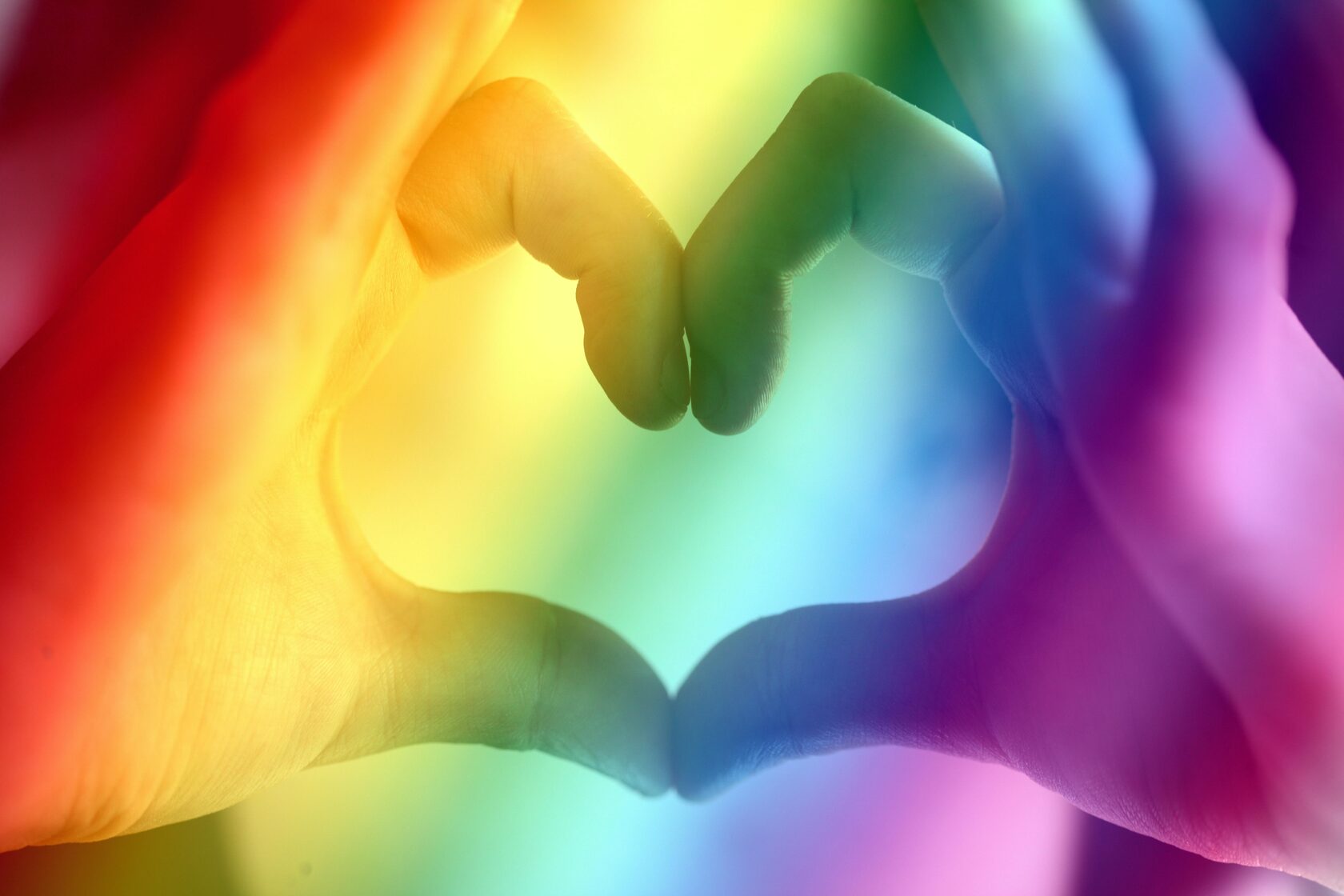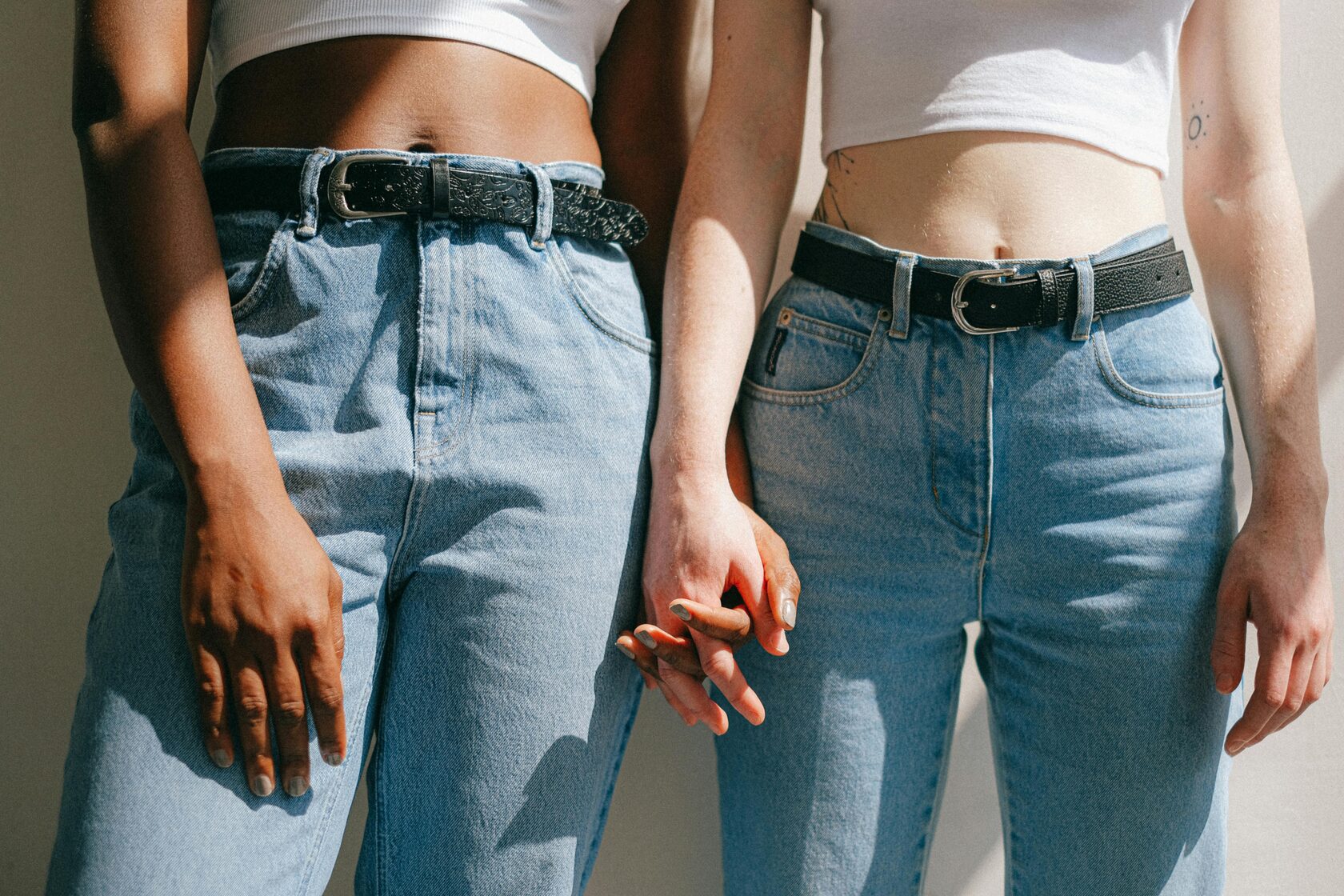Gender is not even a thought for some people, while others search for their identity and struggle to define which gender they relate to if they do at all. If you’re not sure about your own gender situation, Flure’s got you covered. Today, we discuss what it means to be genderfluid, whether genderfluid people can date and fall in love, and compare it against other options on the gender spectrum.

What is genderfluid?
Genderfluid is a word that we started using not too long ago in our society, but it’s representative of the experience that was known to mankind long ago, but very much frowned upon and not discussed a lot, at least not publicly.
The basic meaning of the term genderfluid stands for an individual who doesn’t fully fit into any of the binary gender categories. For them, gender is not something permanent, but a more flexible, fluid substance. Someone who is genderfluid may relate to women for a while, then feel more like a man, and later find themselves relating to none at all.
Genderfluid vs non-binary
It’s common to think that genderfluid and non-binary are interchangeable terms, but that’s not exactly the case. A genderfluid person can relate to and live the non-binary experience as a part of their journey.
As for non-binary folks, they can be genderfluid at the beginning when they just start to realize they don’t fall under basic male and female categories. However, later, once they confirm that they’re non-binary, they tend to stay that way. This is, of course, highly subjective, and your personal experience can look totally different.
Genderqueer vs genderfluid

The second pair that has people confused is the genderqueer vs genderfluid combo. Yep, these are not the same, guys!
Genderqueer individuals don’t conform to the traditional gender categories (female and male) and encompass all identities outside of male and female. Genderqueer can also mean genderfluid or non-binary, but it’s much more than that because it’s an umbrella term. Genderqueer people can identify with one, multiple, or no genders at all. Some of the genders that fall under the genderqueer category are demigender, neutrois, androgynous, two-spirit, or pangender.
Note: The word “queer” used to be, and continues to be in some parts of the world, a slur that was meant to be degrading and insulting. These days, many members of the LGBTQ+ community are using it to celebrate who they are and empower themselves. However, it is still a bit ambiguous, so the Flure team would personally recommend using it cautiously, otherwise you might accidentally offend someone.
Genderflux vs genderfluid
Genderfluid people are flexible with what gender they relate to over time. Today they may identify as a woman, and next week they might align with the non-binary population.
Genderflux is similar but not the same. Someone who is genderflux will differ in how strongly they relate to the gender. For example, this month they fully identify as a female and feel it deeply in their bones. But come next month, they’re not so hot about this gender, and don’t feel connected to it as much.
Someone who is genderflux can identify with just one gender and range in intensity of how much they relate to it, but they can also identify with multiple genders at a time and feel differently towards them, as time goes on.
Agender vs genderfluid
Agender people don’t align with any gender, and they don’t really care about it. For agender folks, focusing on gender is not a big concern or a thought that crosses their mind. They don’t have a connection with the gender concept and present themselves in a gender-neutral manner. As you see, agender is a very different concept from genderfluid. Someone who is genderfluid cares about many genders and it’s a relatively big part of their day-to-day life.
Bigender vs genderfluid
Both bigender and genderfluid terms describe someone who identifies with more than one gender. With bigender, however, the person has two set genders that they fluctuate between, whereas a genderfluid individual does not have a limit on how many genders they can identify with.
Bigender people can feel like both genders at the same time or alternate between them. Genderfluid people typically only identify with one gender at a time. Unlike genderqueer individuals, someone who is bigender or genderfluid can both identify with traditional genders (male and female).
Am I genderfluid?

If you’ve read this article so far and this thought comes up – then there might be some truth to it. People who are confident with their genders rarely question themselves, at least not when they become adults.
So if you’re wondering, it’s quite possible that you can be genderfluid. Or you can be genderflux or bigender. There’s so much to unpack here!
For today though, let’s focus on gender fluidity. How to know if you’re genderfluid?
First, look at how you carry yourself. Do your hair and clothing styles, mannerisms, and the way you talk and walk change over time? If you find yourself dressing up a certain way, and then changing it up completely in a few weeks to align more with a different gender, then that’s your cue.
But it’s not all about external things of course. First and foremost, gender is what’s inside and how you feel about yourself. So look back at your life recently and answer the following questions:
- Do you relate to the sex that you were assigned at birth?
- Do you relate to any other genders?
- What does gender mean for you?
- Have you ever felt like you don’t identify with any gender at all?
- Does someone assuming your gender bother you?
- Have you thought about alternative roles in your romantic relationships that won’t align with the gender that was assigned at birth?
- Have you ever done things or complied with rhetoric that’s traditional for your gender, even though you didn’t agree with it internally?
Your answers to the questions above will push you in the right direction, even though they won’t give you 100% confirmation. Only you can do it with the help of inner work. This deeply personal process will take time, so be patient with yourself and don’t rush things.
Here’s what you can do during this time:
- Do some self-reflection. Think about and analyze your feelings, experiences, and thoughts on gender.
- Explore the gender spectrum. Thankfully, there are many helpful resources these days available online. Look for books, social media influences, interviews with experts.
- Talk to your local LGBTQ+ community. Find people who are also questioning their gender or have gone this path before. Hearing these stories from other real human beings can feel validating and freeing. And it will definitely help you understand your own journey better.
- Start expressing yourself authentically. Not that you’re being superficial now. But do things that feel right that you may have refrained from doing in the past to avoid controversies or because you’re uncomfortable doing something in front of people in your life. Start small, with little gestures or your personal style. Dive deeper slowly, as you feel more free.
The combination of all the points above should be helpful and allow you to explore yourself from a new angle. If you’re up for it, you can also seek professional support from a therapist but try to find someone who’s more open-minded and has experience with gender fluidity. All therapists are licensed professionals and will be able to guide you, but some might do it a bit more delicately and speak from actual experience. That’s always better.
Can you be genderfluid and something else at the same time?
Yes! You can identify as genderfluid and as another gender, or agender. When it comes to genders, there is still a lot we don’t know and are afraid to dive into. It is a complex topic that is also multifaceted. People feel different about their genders, and there are a lot of nuances.
Gender identity is a deeply personal thing, and it’s unique for every individual. There is no right or wrong way to express yourself when it comes to gender. We use all these labels, such as genderfluid, non-binary, bigender, etc to help us understand who we are and also belong to a certain community. If you don’t want to associate with any of the genders, that’s fine. If you feel like you identify with a certain gender today, but change your mind tomorrow – that’s also fine.
Ps – note that gender and sexual preferences are two different things. So not only can you be genderfluid or something else simultaneously, but you can also have different sexual preferences, for example, you can be a lesbian and a bisexual.
Dating a genderfluid person

Dating a genderfluid person, for the most part, is the same as dating anyone else. You need to treat them with respect, communicate openly, and maintain each other’s boundaries. At the same time, it’s hard to deny that dating a genderfluid person might be tricky if the other partner is not open to many things and has distinct preferences. For example, if one person is genderfluid, and the other is pansexual or bisexual, then there should be no issue.
However, if the other person is straight, and their partner starts to assume the gender that is the same as theirs, conflict is almost inevitable.
If you’re currently dating someone and they come out to you as genderfluid, you have all the rights to end the relationship, but if you’re ready to accept it or give it a chance, here is what you can do:
- Sit down and talk about it openly
- Educate yourself on gender fluidity
- Show support
- Try to be flexible and adaptive
- Talk about challenges and tackle them together
- Think about your boundaries and share them
As long as both partners are empathetic, respect one another, and want to make the relationship work – gender fluidity does not have to be a deal breaker.
Flure isn’t just a dating app—it’s your gateway to meaningful connections and unforgettable experiences. Whether you’re seeking new friendships, someone special, or just exploring, Flure makes it easy to find your kind of people. Built on trust, safety, and authenticity, Flure turns your online dating into something truly magical. Ready to make connections that matter? Join Flure today and see where it takes you!








